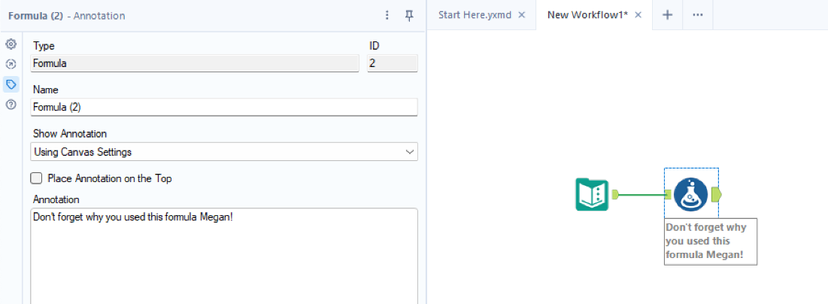Introduction
I learned how to use Alteryx in the summer of 2020 for my first job in analytics. I soon used Alteryx daily, learning from my manager and teaching myself as well. After working as a data analyst for almost two years, I look back at some of the things I did in my first months and cringe—if I had just known sooner!
That’s part of learning—making mistakes and moving forward. But I’m all about efficiency. So, I’d like to share a few things I wish I had known when I started so that if you are starting your Alteryx journey, perhaps your learning curve can be less steep.
1. Designing with documentation from the start prevents confusion
When you are just starting out with new software, you are not concerned about the process—you are just trying to solve a problem, whatever it takes. And for the first few months, that was mostly ok. But once I had to share my work with others or revisit old workflows, I ran into issues:
- My old work was messy, and sometimes I couldn’t even put together what I was doing
- Even if I understood how my workflow worked, it took me a long time to explain it to others
This was when I had to start working on properly organizing and documenting my workflows. Comment and Container tools became my best friends. I also started to edit the tool annotations for certain tools where I applied business logic so that if this workflow got passed down, there would be no questions as to why specific formulas, joins, etc., were used.

Tool Annotations
2. Spending more time understanding the data would help me build the workflow
Once I got my hands on the correct data, I was off to the races. I immediately started working on transforming it and performing calculations to prepare the data for visualization.
Invariably, I would hit a point where I realized, hey, there are null values here, or I don’t know what this means, or this metric’s average is way off from expectations. And this would be after I’ve sunk significant time into my workflow.
Here’s a better way—do some exploratory data analysis first. Look at summary statistics, check for null values, etc. I could often accomplish this with some Browse tools (to see the summary statistics and nulls) and a Select tool (to edit data types and change field names as needed).

Example Browse Tool Configuration Output
This way, I could identify any data quality issues or questions I had about the data in the beginning and reach out to the right people at my organization. It was a time saver in the end—no wasted analysis—and a process step that sharpened my critical thinking, helped me create more useful products, and made me a better analyst.
3. I could optimize my workflows to avoid wasting time
I didn’t know about the cache and run workflow option for a long time. I wasted time waiting for the workflow to run again to test out new portions of it and see what the data looked like. Since the beginning tools remained unchanged, I could have cached and run it so that I wasn’t constantly querying a database or waiting for a large CSV file to load into Alteryx.
Along the same lines, I started developing my workflow with small data samples while working with large databases by adding filter criteria to my SQL queries. This sped up development and worked well when I was changing upstream tools in the workflow. About one year into using Alteryx, I saw someone use the Record Limit option when importing a large flat file to save time as well—it was right there in the file options the whole time, but I hadn’t noticed it!

Input Data Record Limit
4. I didn’t have to reinvent the wheel
I started exploring Gallery when I joined Alteryx and immediately saw what I had been missing. There were so many workflows and macros that I could have leveraged instead of creating my own.

Gallery Filtered for Workflows
If I could go back in time, I would have checked Gallery for my industry use case or the macro functionality I was looking for at the beginning of each Alteryx project. Especially the macros—if you haven’t taken a look, I encourage you to start by checking out the CReW macros, which are developed for common Alteryx use cases.
5. There were many ways to solve problems—the simplest was often the best
When I started as a data analyst, my workflows got the job done. As I gained more experience, I started working harder on making them simpler wherever possible. This can reduce the run time and also make the workflow easier to pass off to another team member.
This effort showed me the value of simplicity and that sometimes it took more work. Just like writing concisely is hard, it was hard to be concise with the tools I used. My manager was great at coaching me with this, showing me how things could be done differently, often with fewer tools.
This is another reason why I love the community—through discussion posts, weekly challenges, and Gallery, we can learn from each other. Other Alteryx users can open our eyes to easier and smarter ways to design and build workflows.
Conclusion
If you already knew everything I wrote about in this article, great! You are prepared to continue advancing your Alteryx prowess. And if you’re just starting your Alteryx journey, I hope these tips can help you work more efficiently and enjoy working with Alteryx even more.
If there is something you wish you had known sooner about Alteryx, please comment and share your wisdom with the community!
Additional Resources:
Alteryx Tips and Tricks: Designing and Organizing Your Workspace
10 Alteryx Tips and Best Practices




